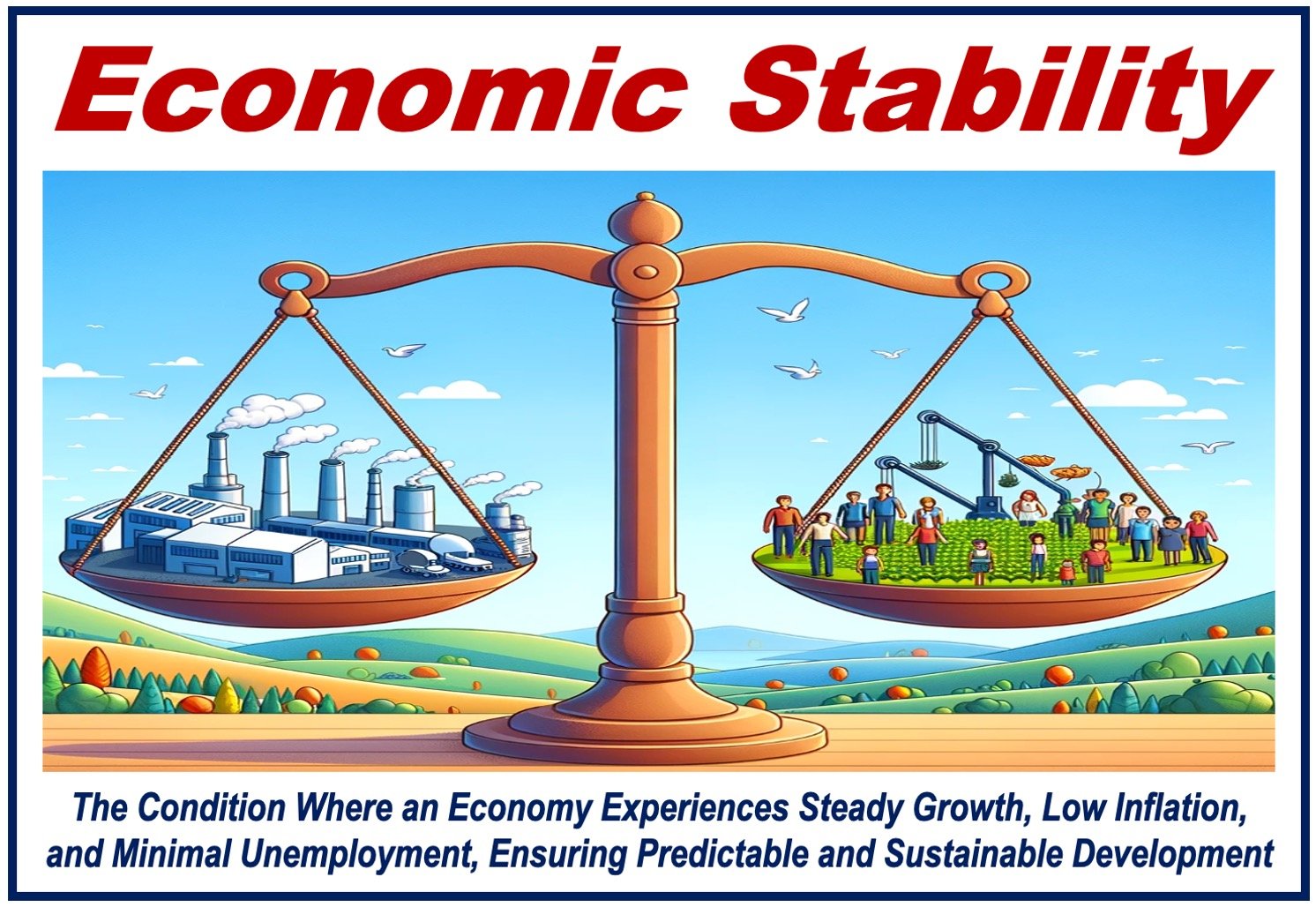If the economy of your country does not have excessive fluctuations in the macroeconomy – levels of inflation, interest rates, GDP (gross domestic product) growth rates, unemployment rates – it has achieved Economic Stability.
Economic stability is achieved when a country’s economy experiences steady growth, low unemployment rates, and manageable levels of inflation.
When the economy is stable, businesses are better able to plan for the future, people feel secure in their jobs, and the government can accurately predict tax revenues and allocate resources effectively.
Economic stability is the opposite of economic instability. When a country’s economy is unstable, major recessions are frequent, business cycles are pronounced, inflation fluctuates and is often too high, and financial crises are common.
Wikipedia says the following regarding economic stability:
“Economic stability is the absence of excessive fluctuations in the macroeconomy. An economy with fairly constant output growth and low and stable inflation would be considered economically stable. An economy with frequent large recessions, a pronounced business cycle, very high or variable inflation, or frequent financial crises would be considered economically unstable.”
Economic stability and market forces
At the core of economic stability is a good balance of the components of market forces, that is, the forces of supply and demand. When the country’s production of goods and services (supply) aligns with what consumers want to buy (demand), prices tend to remain stabilized.
The stabilization of market forces prevents inflation, where prices increase and reduce the purchasing power of money. It also prevents deflation, when prices fall, potentially leading to a recession. During a recession, GDP shrinks and unemployment rises.

Key indicators of economic stability
-
Gross domestic product (GDP)
GDP equals the total value of all goods and services that a country produces over a specific period. Consistent GDP growth suggests a healthy, growing economy. Erratic or negative growth, on the other hand, signals instability.
-
Unemployment rates
When unemployment is low, most people who want to work can find jobs. They contribute to economic growth through spending and investment.
High unemployment, however, suggests an economy in distress; people have less money to spend, leading to a cycle of shrinking demand and greater unemployment.
-
Inflation rates
For economic stability, there should be moderate inflation. Moderate inflation indicates growing demand, which is good. However, if inflation is too high, purchasing power declines and demand falls, which is bad. Low inflation or deflation may signal weak demand and economic stagnation.
Fiscal and monetary policies
Governments and central banks strive for economic stability through their fiscal and monetary policies.
- Fiscal policy
Fiscal policy refers to government decisions on expenditure (spending) and tax revenue. Taxation and government spending can influence economic activity by investing in public services and infrastructure and redistributing income.
- Monetary policy
All the measures and strategies imposed by central banks to steer the economy are part of monetary policy.
Central banks manage the money supply and aim to keep inflation on target. By adjusting interest rates, they can influence economic activity: lowering rates to stimulate growth and prevent recession, and raising them to cool down an overheating economy.
Final thoughts
Economic stability is fundamental for a healthy economy. Without it, long-term growth is not sustainable.
Achieving this stability requires careful management of the economy’s many moving parts, as does maintaining it.
